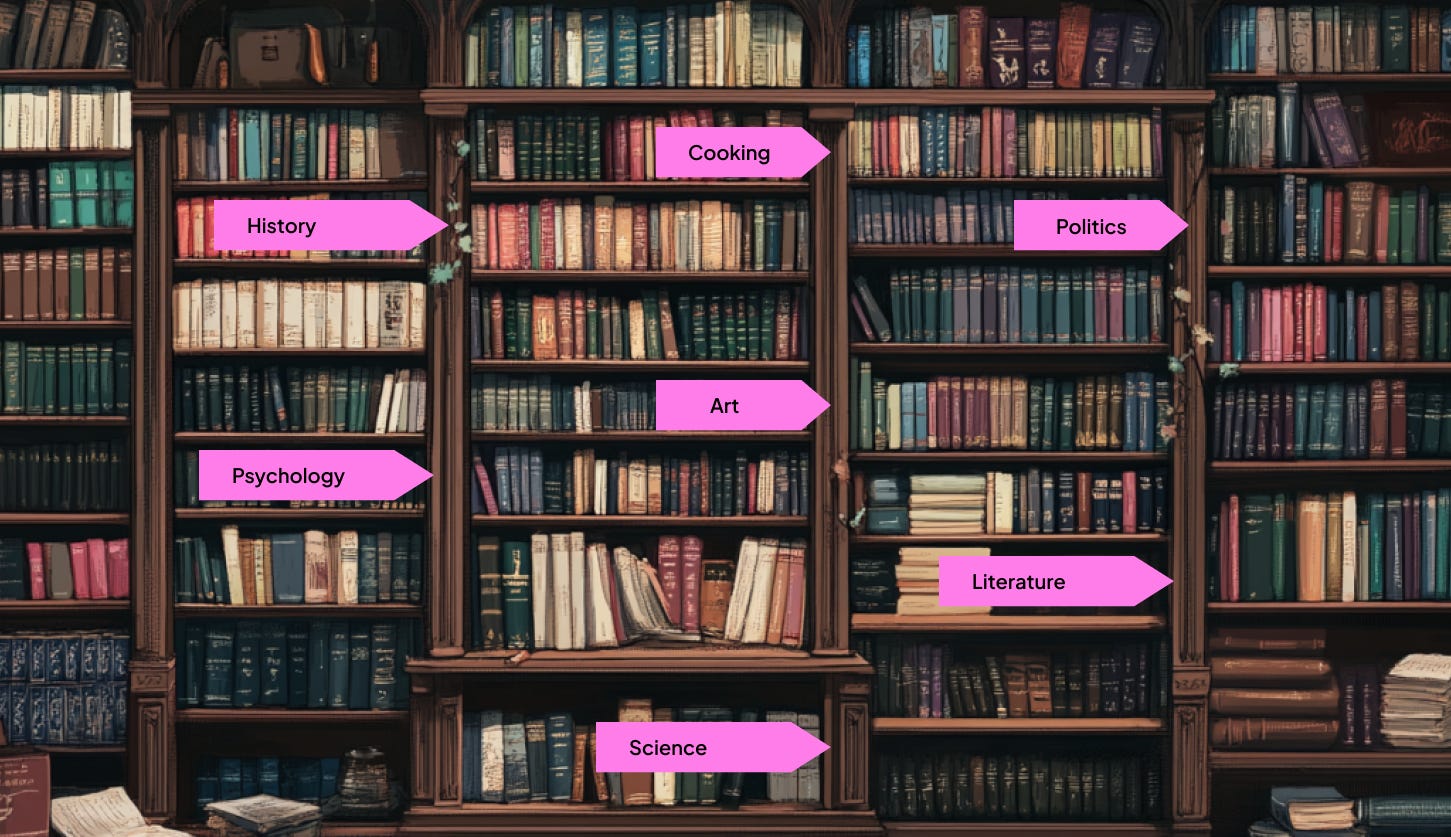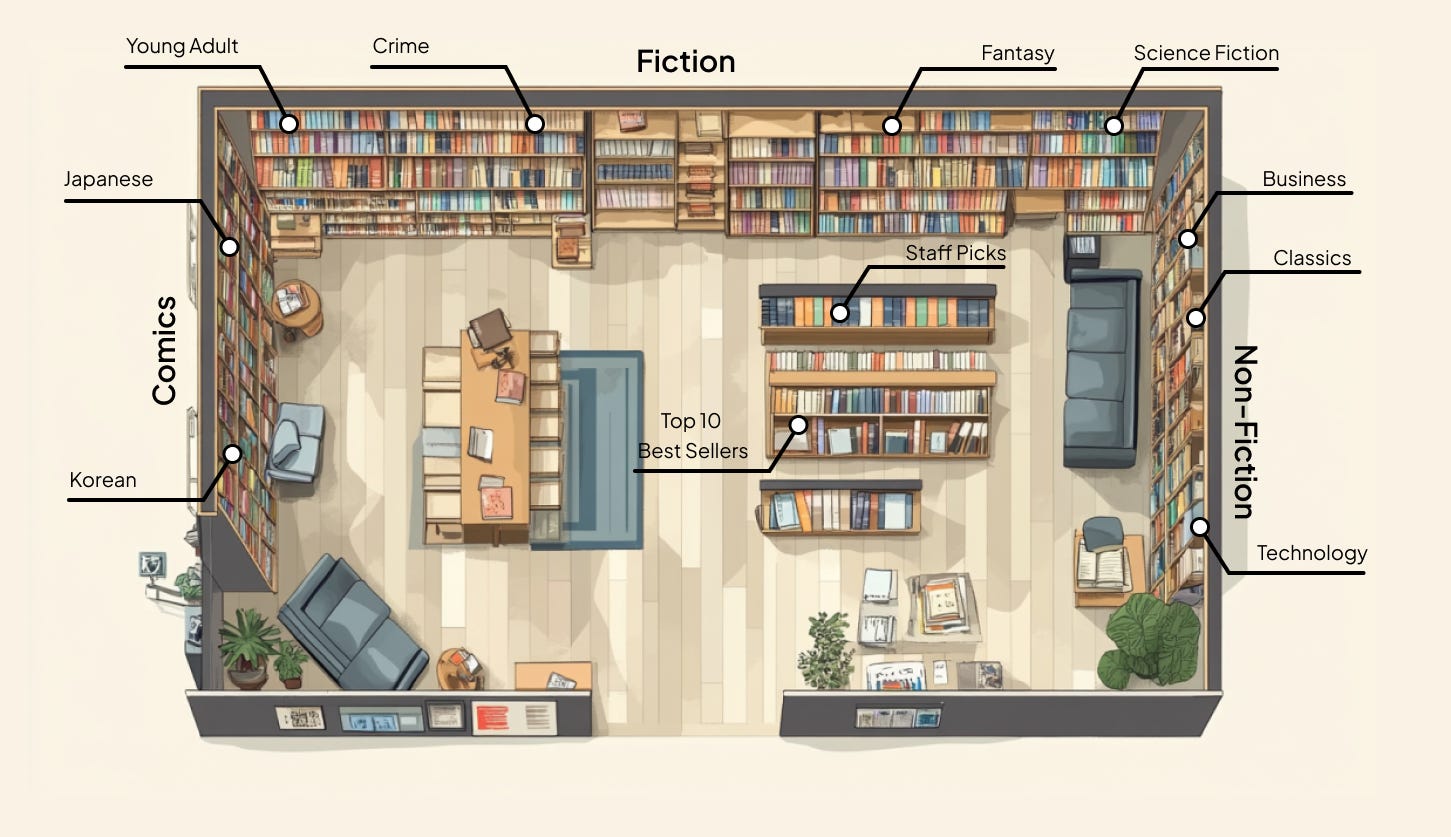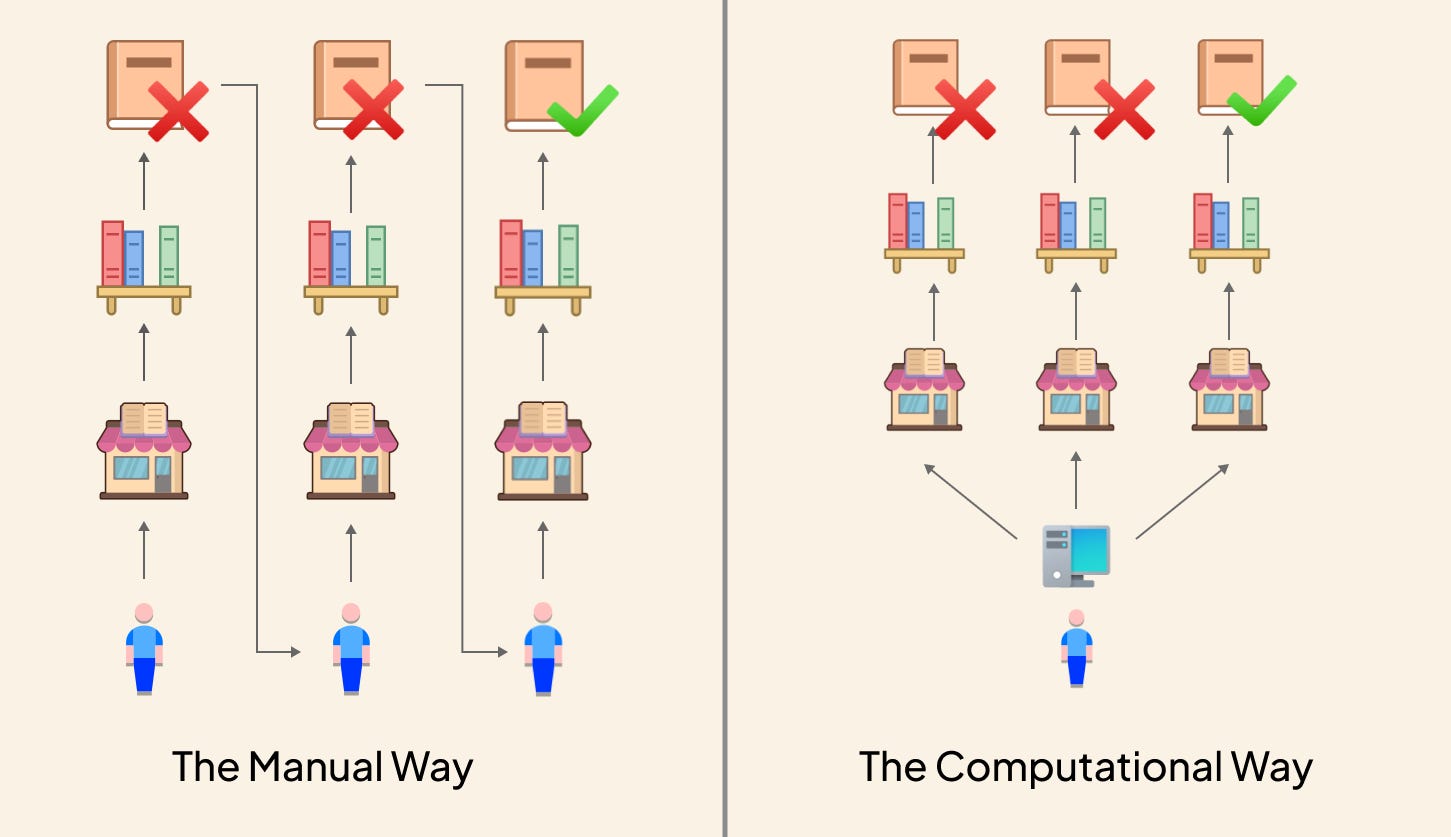Search Smarter, Not Harder
The power of teaching computers our search patterns
What am I going to do? I have got 2 weeks to read half of this book for my book club, (yes, I am part of a book club ) and I don't even have the book. Yes, I know I could use a Kindle but it's not the same. And the book club people can be, in the nicest words, judgmental.... towards kindle users. Joining a book club was my way of reading more.
This month, we are discussing the "Diffusion of Innovations" by Everett M Rogers. It's a non-fiction book about how people adopt and use new technology. An old and therefore very hard to find book. Most people, who are more organized that I am, would have ordered it online and would be halfway through it by now.
So, my plan today is to go book hunting. I blocked out my entire Saturday dedicated to visiting every book store I can to find this book. The first place is a little bookstore just across the road from my house. It usually has older books, so I am hopeful that they have it. I cannot show up to the club without a book. Again.
I walked into the store's narrow entrance and almost toppled the tower of books to my right. There was a sign that said "re-organizing, sorry for the mess". But the layer of dust on the books tells me they've been re-organizing for awhile now. The store's old-book smell was given me hope that I'd find my book here.
It's small bookstore, but even this small bookstore has close to a thousand books and they didn't believe in having sections. I asked someone who looked like an attendant where the non-fiction section is. And with his palm, he made a circle in the air gesturing where it was. I might as well not asked because his circle in the air covered the entire bookshop.
As hopeful as I was, I haven't had coffee yet and its' been two hours of searching. I gave up and left.
Thankfully, there was a café near the second bookstore on the agenda today. Nothing like a nice cup of filter coffee to renew my spirits. I walked in and thank heavens, this store has sections. I saw the non-fiction sign and made my way there. There was about 10 shelves full of books. I completely forgot that business, history, politics, etc are all considered non-fiction too.
So, I got to work and started with shelf number 1. Bending down, looking through the thicker books at the bottom. Then eventually moving to the higher rows. I even got used a shelf ladder. After two hours of searching, I did not have any luck finding for the book.
At this point, I think I have to just get the Kindle version and face the music. At least I'll be able to participate in the discussion. But, I am not about to give up yet, I still have one last bookstore to go to. I need to get this book. My status as a an honorary book club member depends on it.
I walked in and was immediately greeted with... nothing. It was quiet. There was the occasional cough or page turn. It seemed more like a library than a bookstore. I made my way deeper and where was a huge map in front of me.
This bookstore has three floors and there are directions to every nook and cranny of the place. They didn't just have a non-fiction section, they had sub non-fiction sections like "business", "psychology", "philosophy", etc.
I took the lift to the third floor, the "non-fiction technology" section. It was another three shelves worth of books but this time the books were sorted alphabetically. My eyes darted to the books beginning with "D" and there it was. Just sitting there. "Diffusions of Innovations" by Everett M Rogers. it even looked smug that it took me this long to find it. But that's fine, all I cared at that point was that I found the book.
I bought the book and went home to get started. With some diligent reading (and book summaries on the internet), I got every thing I needed for my session. I think I even impressed a member or two.
After our session, I shared that it was hard to find the physical copy of the book. Lydia, another book club member and a friend showed me a website.
It was a website that would search for a book in all of the nearby bookstores. You could put any book title in and it will tell you if a bookstore nearby has it in stock. Saving you the trouble of walking in. In the "how it works" section, the website even tells you how it finds these books.
Go into a shop's digital library → then the non-fiction section → look for the book
It was the exact same steps that I took, except it was a computer and it took a minute instead of a whole day like I did.
Computational Design is the website
You know what ? Doing anything repetitive with geometry or data is exactly like how I found my book. I manually went through all the book stores, hoping they were organized (sections, sub-section, alphabetically) and then manually searched for the book. All of that, when I could have asked a computer to do the searching for me. We go into a model hoping that it's organized enough for us to find what we need. We still rely on our own eyes and intuition which takes up most of the time.
What's worse is that I didn't thing I did anything wrong. Whenever I needed a book, I would just visit the bookstores, I didn't think about using a website. That actually mirrors how most of us currently work, we spend a lot of time "doing it the way we always did" but we don't question if there is a better more efficient way.
I also don't blame you. Questioning our own processes, especially long standing ones, can be hard. Some times we don't even know that we are doing things the slow way. Like I certainly did not think of using a website at all to search for books.
Geometry and data are messy bookstores
Everyone works differently which means everyone has their own way of storing data / geometry. It's like bookstores, some don't believe in having sections, some have vague sections and some even break it down into sub-sections for you. But there is always some relationship between what you're looking for and the model. Like how most non-fiction books will be in a non-fiction section of a bookstore.
It's actually why we have modelling standards or job descriptions. The idea is to bring some consistency to an infinite way of organising something. And if things are sufficiently standardized, computers can use this patterns to find things a lot quicker than we can.
For example, you can computationally identify things like :
All column and wall intersections and colour it red on the floor plan so it's obvious
Measure the length of all the steel members and give you a list of ones that are too short
Analyse all paths from destination A to B and give you back the shortest one
We can try to do most of these manually, to some extent. But when you're dealing with thousands of elements (like we can't manually check 1,000 intersections in a day), computational methods become not just helpful, but necessary. If there's a consistent pattern, a computer can perform these searches accurately, completely, and in a fraction of the time it would take us.
I have actually written a more in-depth article about computational modelling here
Final Thoughts
There is nothing wrong with the way I found my book. It just took me a lot longer to do so when you compare it to the website. What bothers me is that it never occurred to me that a website like that existed. If I had a free afternoon, I would have still gone book hunting because I enjoy the process. But I needed this book quickly, so I would have preferred the website.
Similarly with our design work, sometimes manual searching and exploration inspires you. There's value in "browsing the shelves" of our models occasionally. But when we need specific information quickly and reliably, computational search methods are much better.
It's not about which process is better, it's more about having more options. It's the same with computational design—it doesn't replace your work, it gives you another tool to work with. And sometimes, that tool can save you an entire day of hunting through digital bookshelves.






